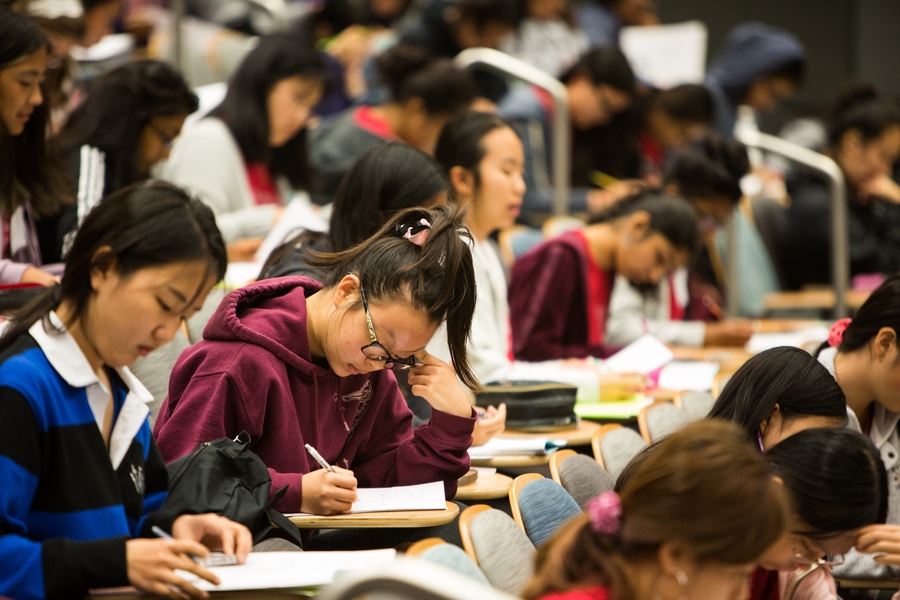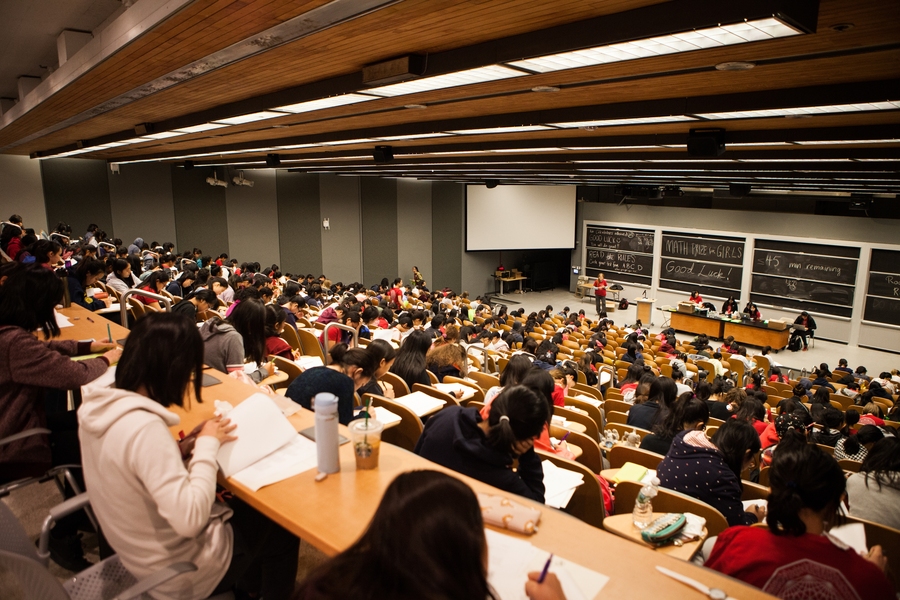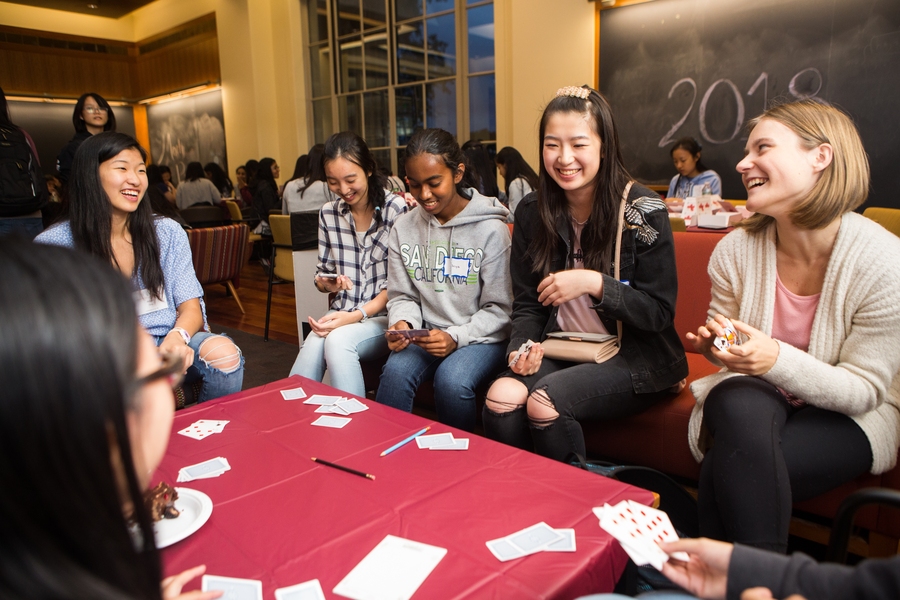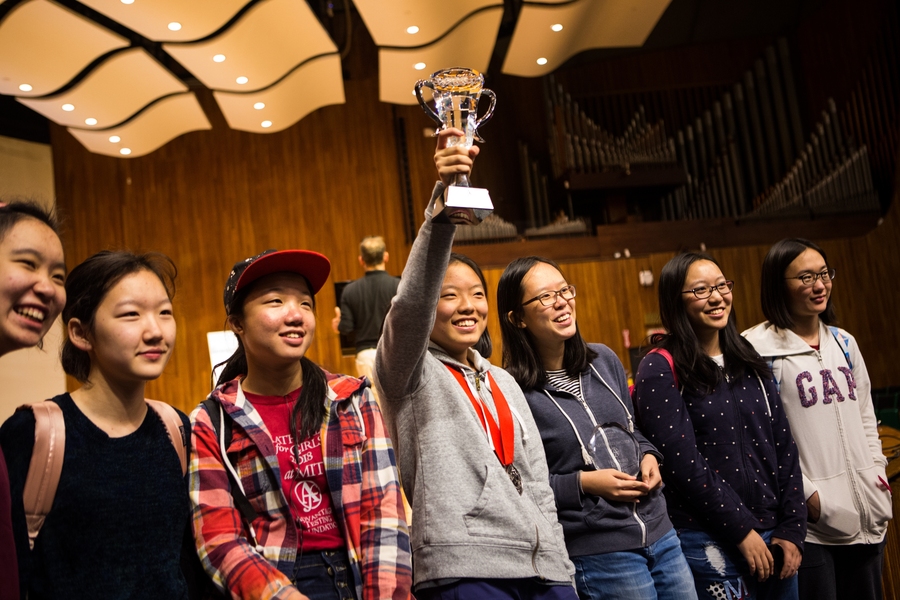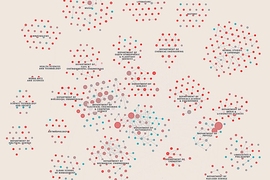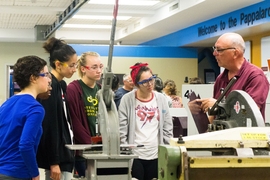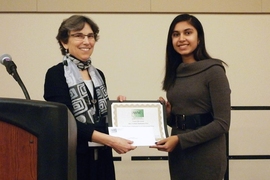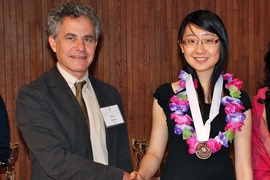When Glenn Ellison coached his daughters’ all-girl math team all the way to the state finals, he noticed that his team was vastly outnumbered by boys.
Ellison, the Gregory K. Palm (1970) Professor of Economics at MIT, turned his dismay into research. With Ashley Swanson of the Wharton School at the University of Pennsylvania, Ellison published a paper that showed a huge gender gap in high school mathematics.
In the paper, “Dynamics of the Gender Gap in High Math Achievement,” distributed in August by the National Bureau of Economic Research, they reported that of the top 5,000 9th graders participating in the American Mathematics Competitions (AMC) from 1999 to 2007, just 30 percent were girls. By senior year, the number drops to 22 percent. High-achieving female math students were so discouraged they either dropped out of math contests, or saw their scores droop by their senior year.
The research confirmed and quantified what others had already come to know. Back in 2009, in an attempt to address this trend, Ravi Boppana ’86, a research affiliate with MIT’s Department of Mathematics, helped launch the Advantage Testing Foundation Math Prize for Girls. This past weekend marked the 10th anniversary of the contest, as a record 285 middle and high school female students from the United States and Canada arrived at MIT to compete for $60,000 in cash prizes.
Helping female “mathletes” thrive
“It is imperative to bridge the gender gap in math and science so that the best and brightest women as well as men reach their fullest academic and professional potential,” said Arun Alagappan, Advantage Testing’s founder and president. “Even as we help empower young women to believe in and express their abilities, we are helping build a more robust group of leaders in the STEM professions, and a more competitive economy as well.”
Advantage Testing’s goal is to bring girls with strong math skills together to encourage their talent, build a network lasting into college and beyond, and inspire them to mentor girl math students. “We want to give these girls the opportunity to thrive in an environment where their sense of belonging is never in question," said Alagappan.
Boppana added: "Girls perform as well as or better than boys in math classes in grade school, but there is an alarming drop-off in the number of young women who study math in college and pursue math-related careers. We created the Math Prize for Girls to help debunk gender stereotypes, and to support young women who see higher-level mathematics as a pursuit that is challenging, fun, and incredibly rewarding."
Contest and community
“The Math Prize is far more than a prestigious math competition,” said Maria De Vuono-Homberg, associate director for the Math Prize for Girls. “It is a weekend-long event which encourages the girls who attend to get to know each other and forge connections for their future in college, industry, and research.”
Young female “mathletes,” who qualified with a top score on the American Mathematics Competition exam in February, arrived last Saturday for a campus tour and an MIT admissions informational session, followed by a non-competitive game night in the Math Department’s Norbert Wiener Common Room. The next morning, while parents attended a panel by Math Prize alumnae, contestants took a 2.5-hour exam with 20 multistage problems in geometry, algebra, and trigonometry.
While the results were reviewed by a panel of judges from MIT and Advantage Testing, MIT students and Math Prize alumnae Justina Yang and Emma Kerwin helped host the awards ceremony. The MIT Muses entertained the participants, and Associate Professor Moon Duchin of Tufts University’s Department of Mathematics gave the Maryam Mirzakhani keynote lecture: "Random walks in theory and practice.”
First prize was a tie, with 17 out of 20 questions answered correctly, between Yuxuan Zheng, a Princeton International School of Math and Science Junior from New Jersey, and Catherine Wu, a senior at Saratoga High School in California. Seventh grader Jessica Wan of Puerto Rico took third place. A list of the winners can be found at the Art of Problem Solving website.
Honorable Mention awardees received $250 merit scholarships to the Canada/USA MathCamp summer program, and MIT Department of Mathematics Head Michel Goemans presented awards to the 2017 Advantage Testing Foundation Math Prize Olympiad winners, including Gold medalists Wanlin Li of New York and Yuting “Emma” Qin of California. The top 35 Math Prize performers are invited to compete in the next Olympiad in November 2018.
Emma Kerwin, a senior management major, gave a talk on why girls should stay interested in math, even if, she said, they are “the only girl in the room.” The highlight of the event for her is the camaraderie. “They don't just have girls do the contest and then leave,” said Kerwin, who competed in the Math Prize competition during her junior and senior year of high school. “There is also a focus on having fun and being part of a supportive community. This provides a much more holistic experience for contestants.”
More importantly, she said, the competition gives contestants a chance to meet other girls who are interested in mathematics. “The overall nature of the event is very empowering and is focused on celebrating contestants' capabilities and unique interests.”
MIT supports girls in STEM
The Math Prize board of advisers includes Michael Sipser, dean of the MIT School of Science and the Donner Professor of Mathematics; Gigliola Staffilani, the Abby Rockefeller Mauze Professor of Mathematics; Lauren K. Williams ’05, the Seaver Professor at the Radcliffe Institute and a professor of mathematics at Harvard University; and Ioana Dumitriu ’03, a math professor at the University of Washington. This was MIT’s 8th year hosting the contest.
“These competitors are the future problem-solvers in our field,” said Sipser. “It is critical to the advancement of mathematics to keep the pipeline of women into STEM programs strong, here at MIT and elsewhere. This contest accords these talented students the visibility and community necessary to support women who have the potential to pursue mathematics at a professional level.”
The contest also creates a pipeline of talent to MIT, to which more than half of the top awardees have matriculated. “Every year, the girls who participate in this event never fail to impress us with their creative problem-solving skills and their enthusiasm for mathematics,” said Goemans. “This competition encourages more women into studying mathematics, and this is much needed.”
Because many high school mathematics programs face challenges in reaching the level of study required in the MIT mathematics curriculum, the department has designed programs to prepare students, including women, with supplemental education opportunities. These include the Summer Program in Undergraduate Research (SPUR) and SPUR+, (Summer Program in Undergraduate Research); the Directed Reading Program; Undergraduate Research Opportunities Program (UROP) and UROP+; MIT Summer Research Program (MSRP); and PRIMES (Program for Research in Mathematics, Engineering, and Science).
Once they are at MIT, the department continues to support female math majors by arranging dinners and lunch seminars, encouraging them to mentor future women in mathematicians at middle and high school, and supporting the Undergraduate Society of Women in Mathematics and MIT Black Women’s Alliance. The Department of Mathematics also hosted February’s Graduate Workshop in Algebraic Geometry for Women and Mathematicians of Minority Genders.
“The Department of Mathematics aims to be a strong advocate on behalf of girls and women interested in a STEM career,” Goemans said.
Math Prize board member Ioana Dumitriu recalled feeling supported as a doctoral student in MIT’s Department of Mathematics, but she also said she recalls being very aware of a dearth of women math majors and faculty. Now a math professor at the University of Washington, she said she has grown dismayed over how girls and boys are taught STEM in the United States. “Girls are getting the short end of the stick in this country,” she said. “I see that there is definitely disparity between the levels of encourage we give to boys and the encouragement we give to girls with respect to math and STEM-related fields.”
This need for encouragement is why she is passionate about her involvement in the Math Prize for Girls contest, as well as a driving force behind her involvement as a coach for the William Lowell Putnam Mathematical Competition.
“I see a huge difference self-confidence makes,” Dumitriu said. “It’s hard to attract female students (to the Putnam) because they come in and they see self-confident boys. That somehow discourages them from participating.”
The key to change this is faculty involvement, she said. “Seeing top mathematicians acknowledging your talents and your merits and congratulating you, that’s when you believe in yourself,” she said. “Role models are very important. I think that self-confidence is one of the biggest differences that one can make at this level.”
